Here are some awesome new book reviews from Mikaere Flavell! He read the books with his niece Māia and wrote up his thoughts for us here at The Sapling. So all you have to do now is get ready for the stories of Pīpī Kiwi, Flit the tīrairaka and the Kauri whānau!
Ka taea e koutou ēnei arotakenga pukapuka te pānui i te reo Māori.
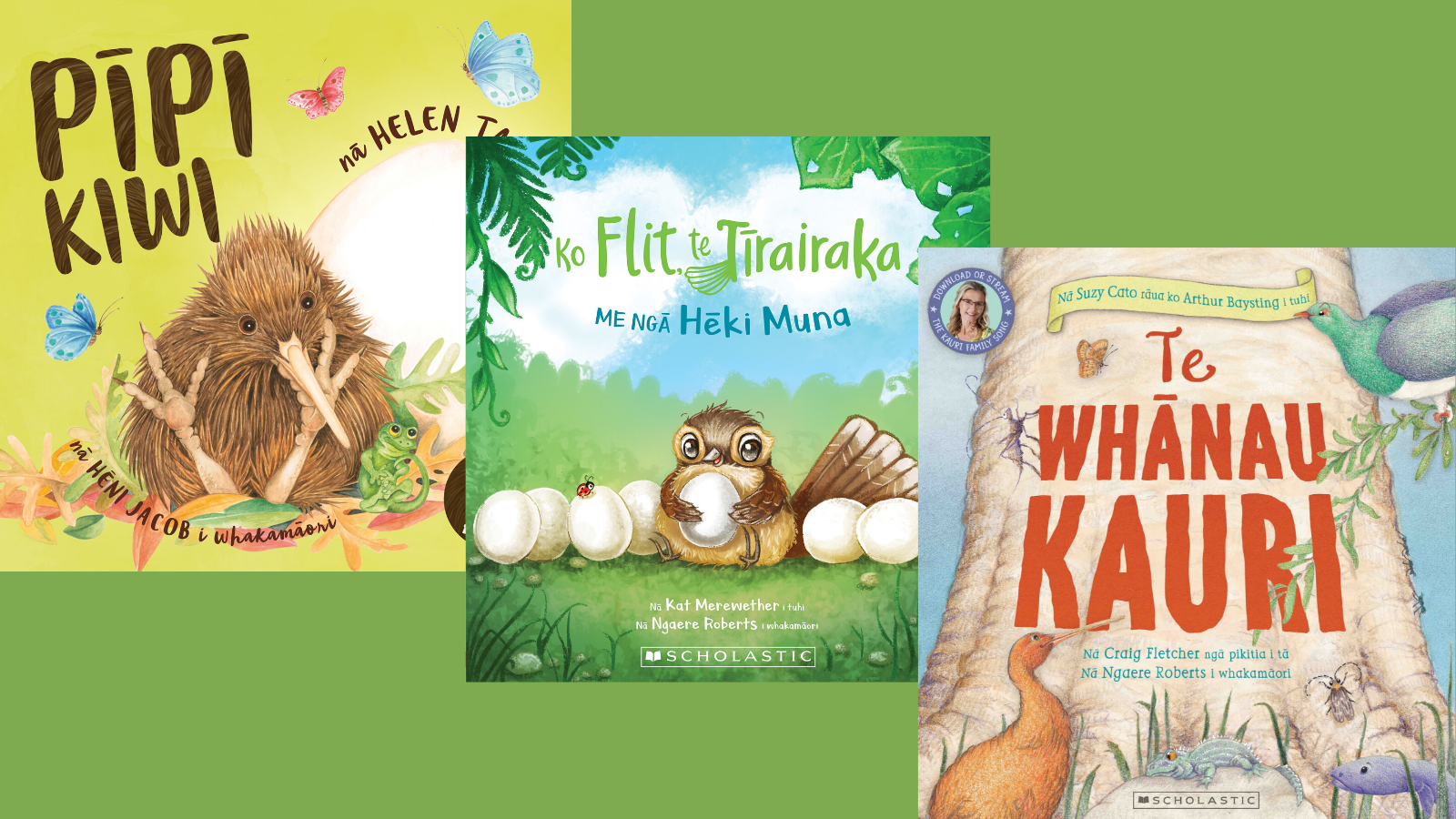
Pīpī Kiwi, by Helen Taylor, translated by Hēni Jacob (Puffin)
Kiwi Iti is surprised after waking up to an egg in the nest, because Kiwi Iti has never seen a Kiwi egg before. His dad Kiwi Nui explains to Kiwi Iti that a pīpī Kiwi or baby Kiwi lies inside the egg. Kiwi Iti becomes very curious and asks many questions about the things Pīpī Kiwi can do once Pīpī Kiwi hatches.
Kiwi Nui, with the same reply to each of Kiwi Iti’s questions, says.
‘E kāo, Kiwi Iti, tāria te wā’.
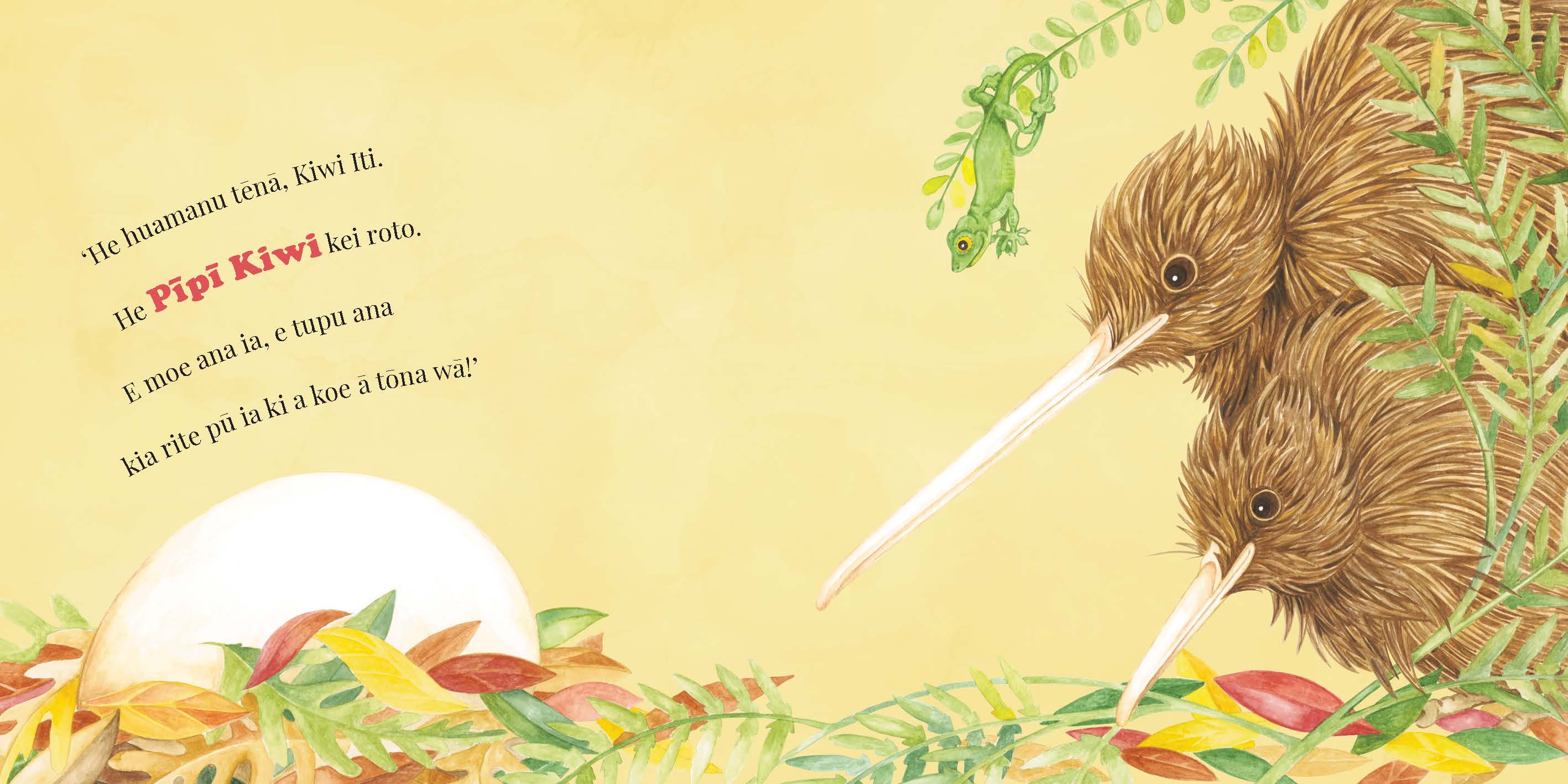
Kiwi Iti must learn that in time, one day when Pīpī Kiwi grows, Pīpī Kiwi will be able to do the things Kiwi Iti is asking Kiwi Nui about.
Kiwi Iti’s impatience and many questions reminds me much of myself as a child, although I consider Kiwi Iti fortunate to have had the questions Kiwi Iti asked, replied to, as that was usually not the case for me in my young and inquisitive days.
The Māori translations are very clever. I found it intriguing how the words, ‘tiaki’, ‘tatari’ and ‘whanga’, which all translate to English as wait, were written consecutively. Also, the illustrations, particularly of Kiwi Iti’s facial expressions gave the words ‘tiaki’, ‘tatari’ and ‘whanga’ a type of mood, where instead of just meaning wait, I interpreted them as wait, with a type of attitude.
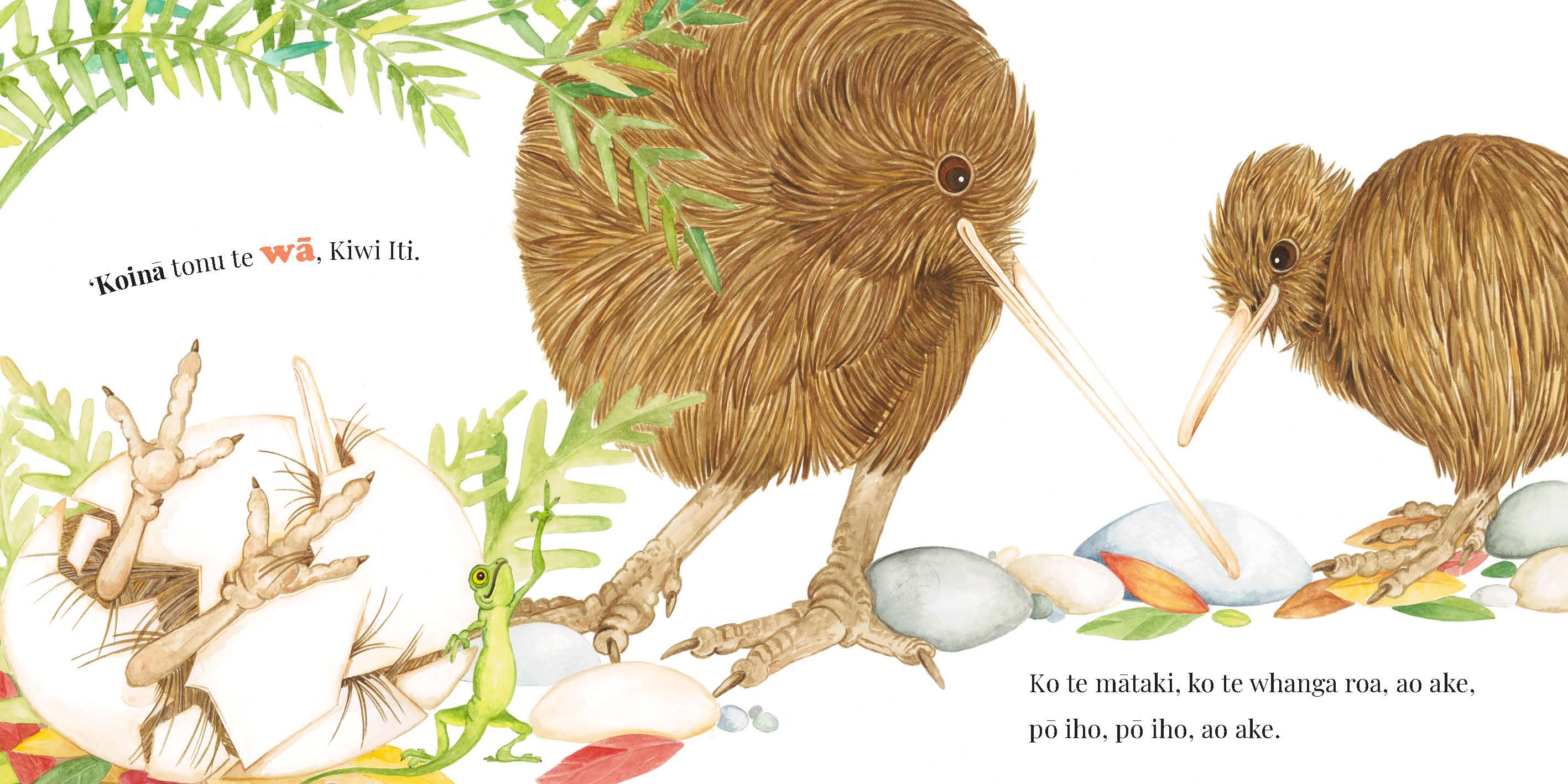
Pīpī Kiwi is a nice, enjoyable and simple read, with beautiful and entertaining illustrations, which I found myself gazing at with admiration, as with or without words, illustrations can also tell a story. This is the first time I have read and reviewed a book by Helen Taylor, and I look forward to reading more of her books in the future.
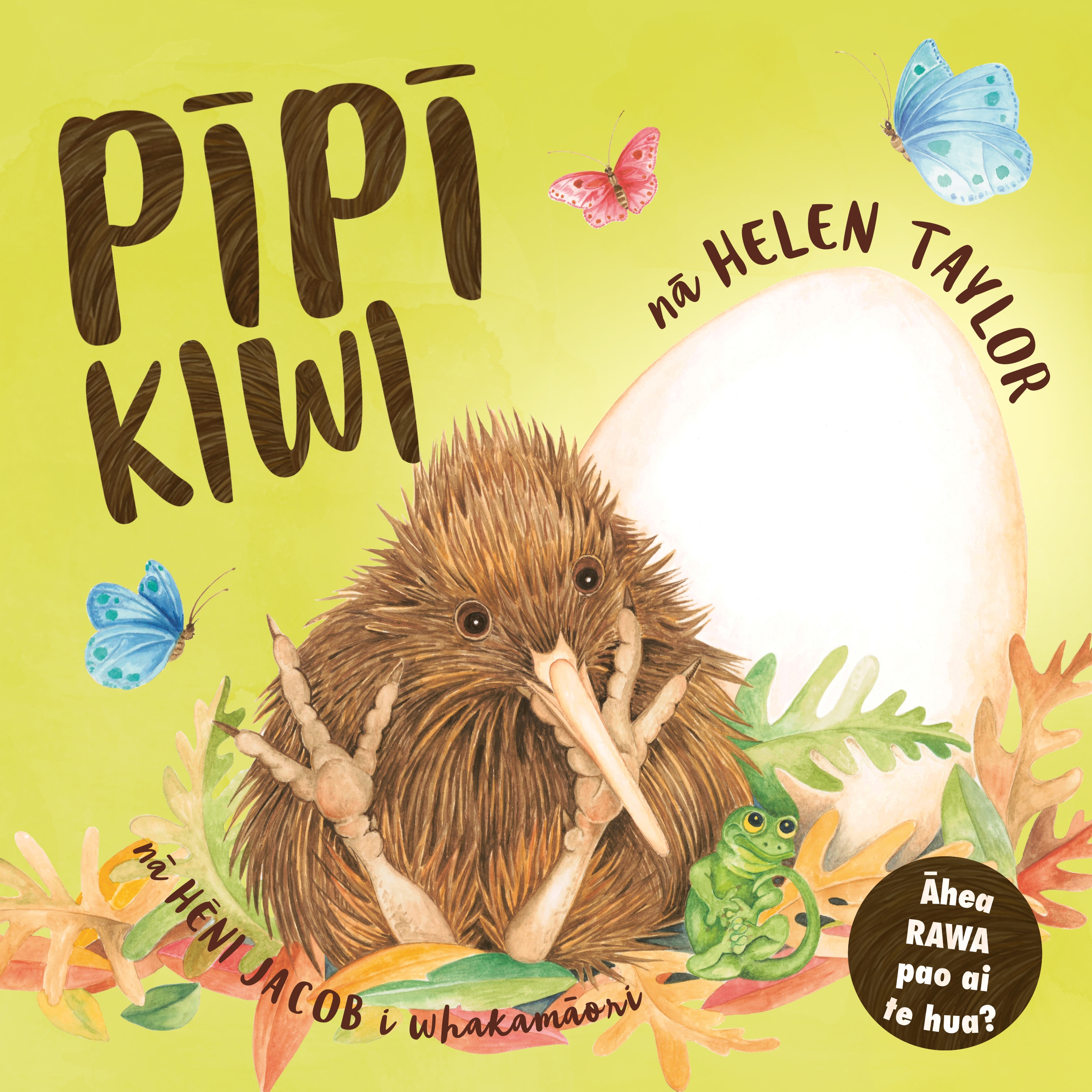
Ko Flit te Tīrairaka – Te Rerenga i Hē, by Kat Merewether, translated by Ngaere Roberts (Scholastic)
If you want to read a book that embodies the saying ‘never give up’ read Flit the Fantail and the Flying Flop. I admire this book and I especially admire Flit and his courage, will power and determination to keep on keeping on.
Adorable little Flit is in a tricky situation. Flit attempted to fly, but has fallen from his nest high in the kōwhai tree. Flit tries to push off from the ground and fly back up, but he needs help to get back to the nest.
Flit is helped by Kīkī, a young Kākā.
‘E aha ana koe, Flit?’ says Kīkī.
‘Kāore e taea e au te hoki ki tōku kōhanga’ responds Flit.
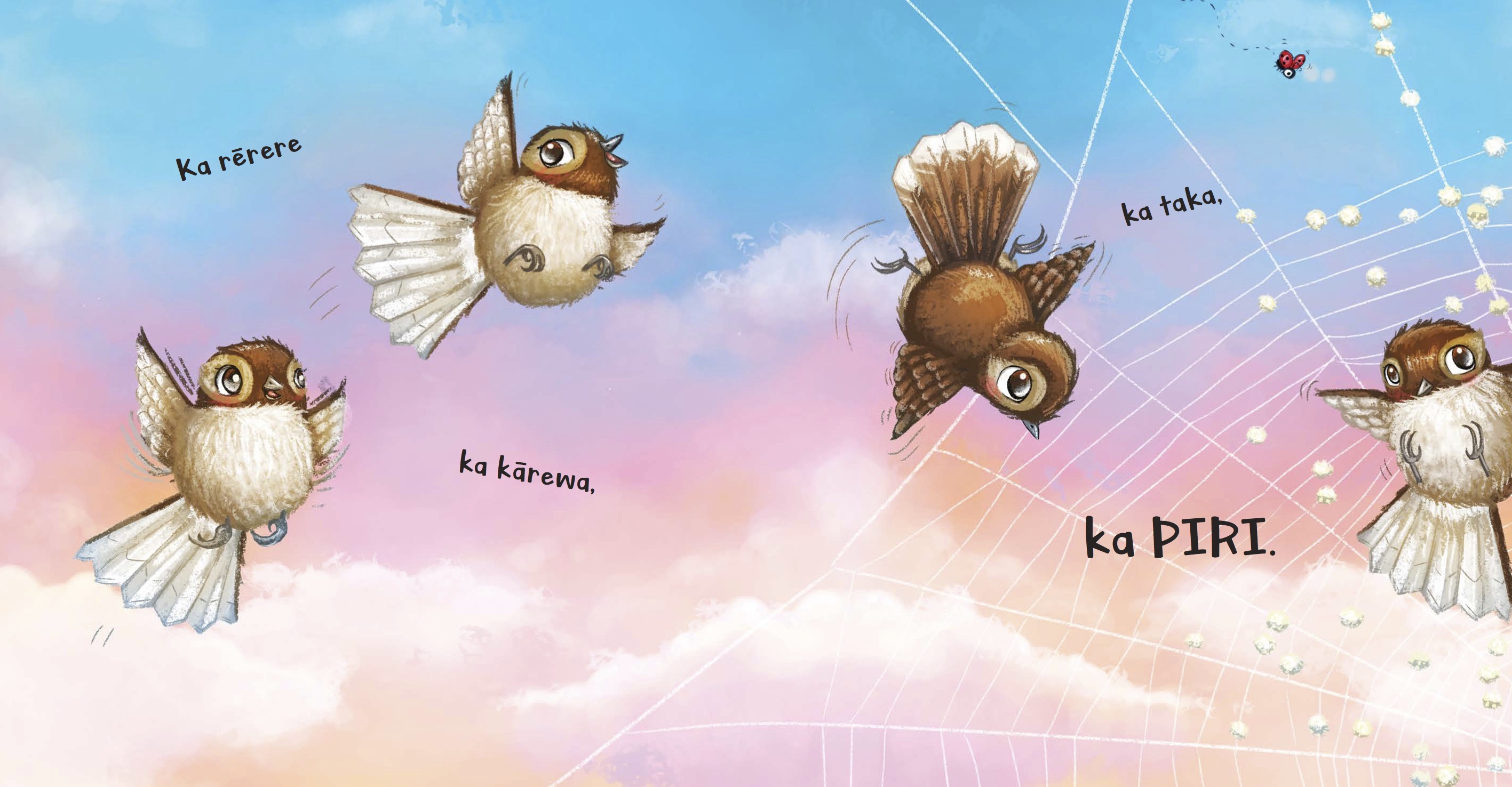
Flit gets a huge amount of help from many birds. Although the individual stratergies by each bird to help Flit back home did not have a successful outcome, their collaboration and strategies together, as suggested by Ruru, got Flit back to the nest.
I think this book demonstrates a thorough understanding of the importance of strong relationships, helping others and working together.
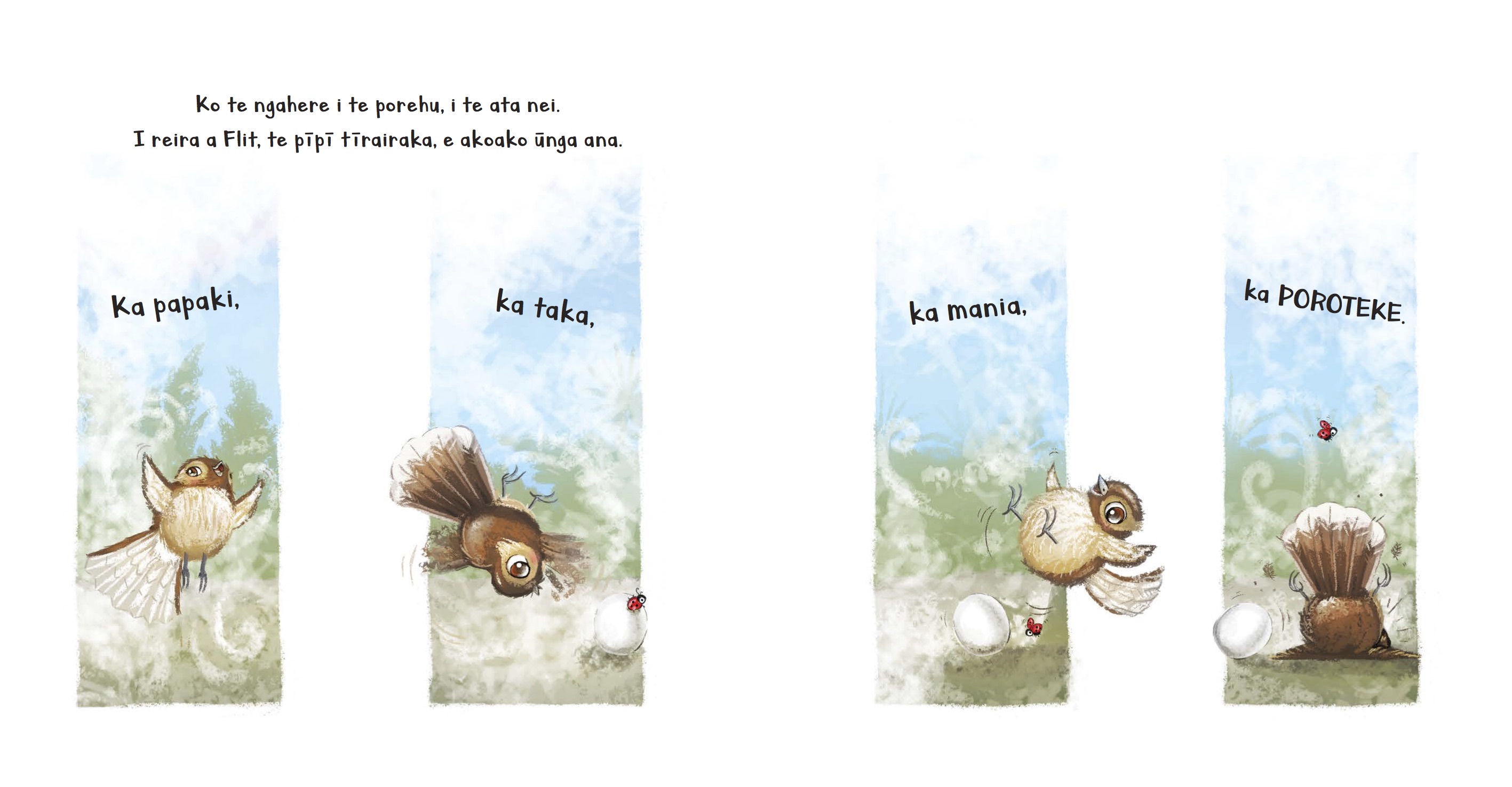
There were a few errors in the publication of this book:
Flit’s name on page 23 was misspelt, and there were a few grammatical errors. However, I still enjoyed this story and the inclusion of some dialectical vocabulary, ka rawe.
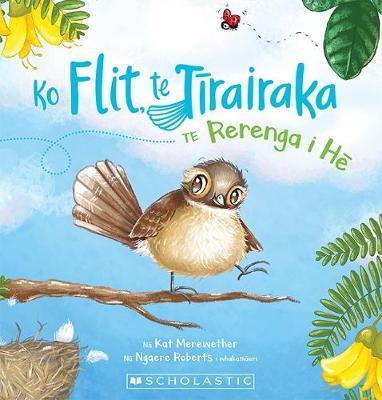
Ko Flit te Tīrairaka – Te Rerenga i Hē
By Kat Merewether
Translated into te reo Māori by Ngaere Roberts
RRP $17.99
Te Whānau Kauri, by Suzy Cato and Arthur Baysting, illustrated by Craig Fletcher, translated by Ngaere Roberts (Scholastic NZ)
In the forest stands tall a strong, chiefly Kauri tree, accompanied by the Kauri family. Kiwi, Wētā, Tuna, Ruru, Pōpokorua (Ants), Pūrerehua (Butterflies), Tīrairaka (Fantail), Tuatara too, Tūī, Matariki, make up some of the Kauri family. They decorate Kauri, they keep Kauri warm, they entertain Kauri together in all forms. Kauri is loved and still grows strong, the Kauri family have a special bond.
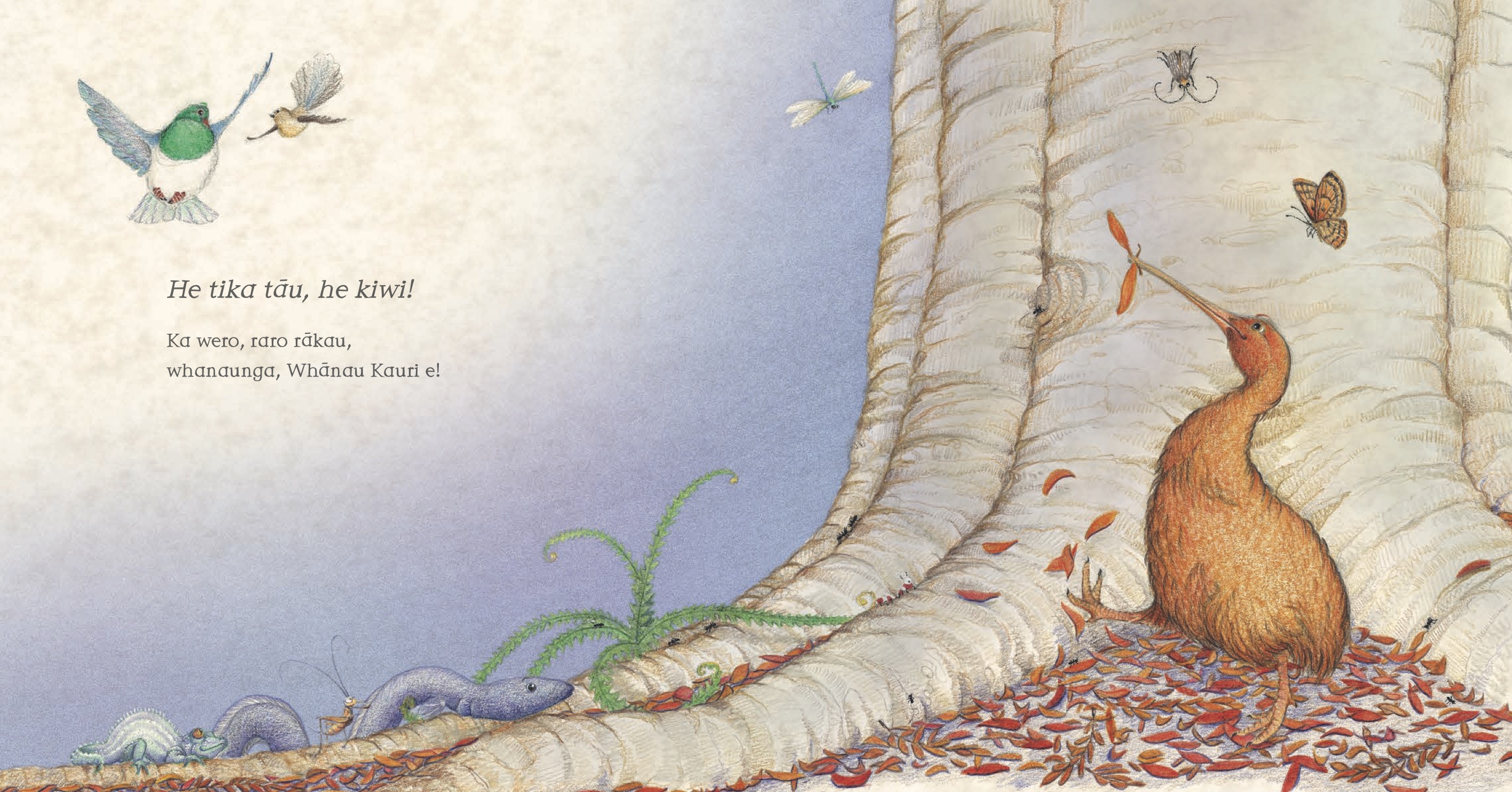
In the river, amongst the leaves, on the bark of the Kauri tree, on the branches way up high, you definitely will see a member of the Kauri family.
Māia (my niece) and I thoroughly enjoyed this book. It became more of a game for us as we guessed the members of the Kauri family using the ‘tīwhiri’, the hints, my niece puts them as..
‘He ika roa, he tūpuhi,
kōiri haere ai.
Ika hāwaniwani…’
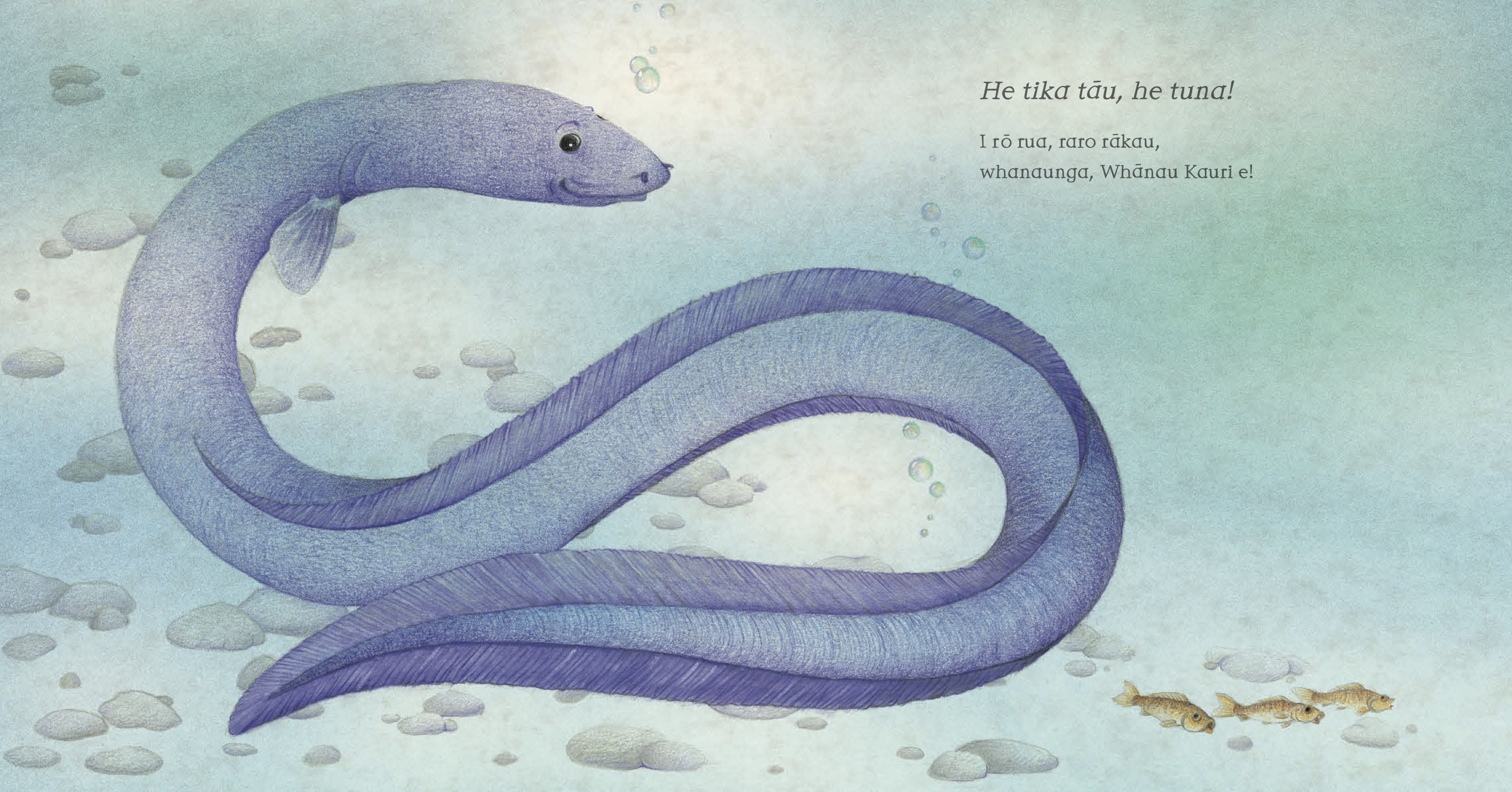
My niece learnt a few new Māori words. She frowned with confusion as the Māori words she learnt, although meant the same as the words she already knew, weren’t spelt the same. I explained to her, ‘Sometimes there is more than one word in te reo for just one thing.’
To conclude, I should also pay tribute to Arthur, a great maire standing tall in the forest, the kauri treetop of this book. Haere atu rā me ngēnei mihi whakaaroha ā tātou.
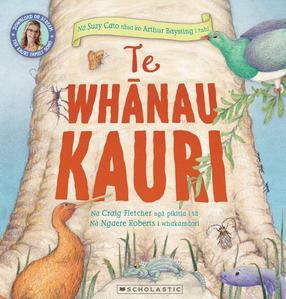
Te Whānau Kauri
By Suzy Cato and Arthur Baysting
Illustrated by Craig Fletcher
Translated into te reo Māori by Ngaere Roberts
RRP $19.99

Mikaere Flavell
Ko Maungatautari te maunga
Ko Raukawa te iwi
Ko Ngāti Te Rangitawhia te hapū
Ko Mikaere Te Ao Mihia Flavell tēnei e mihi atu nei.
I'm a student and tutor of te reo Māori at the University of Waikato and currently living in Hamilton. I'm a te reo advocate and have a huge passion for languages and language revitalisation. I love reading, I love learning and I love people and I especially love yarning over good coffee and good company.
Whakaterea te pahī o reo kia Māori ki uta, ki te au hāro o reo kia ora.
Tūrou!



